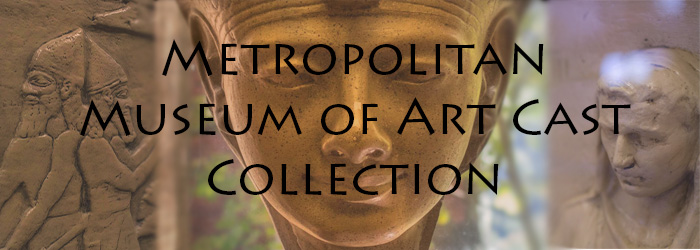
Description
Plaster cast of David with the Head of Goliath, a bronze statue by Andrea del Verrocchio created between 1466 and 1476. Original housed in the Bargello, Florence, Italy.
Publication Date
1978
Type of Artwork
Statue
Time Period/Geographical Region
Renaissance Europe
Height (cm/in)
134.62 cm / 53 in
Width (cm/in)
63.5 cm / 25 in
Depth (cm/in)
48.26 cm / 19 in
Disciplines
Ancient History, Greek and Roman through Late Antiquity | Sculpture
Recommended Citation
Morehead State University. Camden-Carroll Library., "David with the Head of Goliath" (1978). Metropolitan Museum of Art Cast Collection. 12.
https://scholarworks.moreheadstate.edu/metropolitan_art_collection/12
Files
Download
Download Image (84 KB)


Comments
The original bronze sculpture of David from which this cast was made was produced around the year 1475 by the artist Andrea del Verrocchio. Some claim that a young student in Verrocchio's workshop, Leonardo da Vinci, was the model for the figure's striking looks. It was a commission for the Medici, a wealthy and powerful Florentine banking family, possibly for Piero di Cosimo de'Medici or one of his sons, Lorenzo or Giuliano. MSU's cast collection includes a bust of Piero di Cosimo de'Medici, perhaps the likeliest patron of this David statue. David, the Old Testament boy who slayed Goliath and became a king, was a symbol for the city of Florence and its rulers, the underdog defeating an impossible adversary. Other artists who sculpted the subject of David and Goliath include Renaissance artists Donatello and Michelangelo and Baroque artist Bernini. Verrocchio's version of David was highly successful in its time, and prized for its naturalism, especially in the grotesquely beautiful features of the giant's decapitated head at the foot of the hero. This cast is one of the most important in MSU's collection. In the 19th century, nearly all leading European and North American cast collections owned a copy of it.